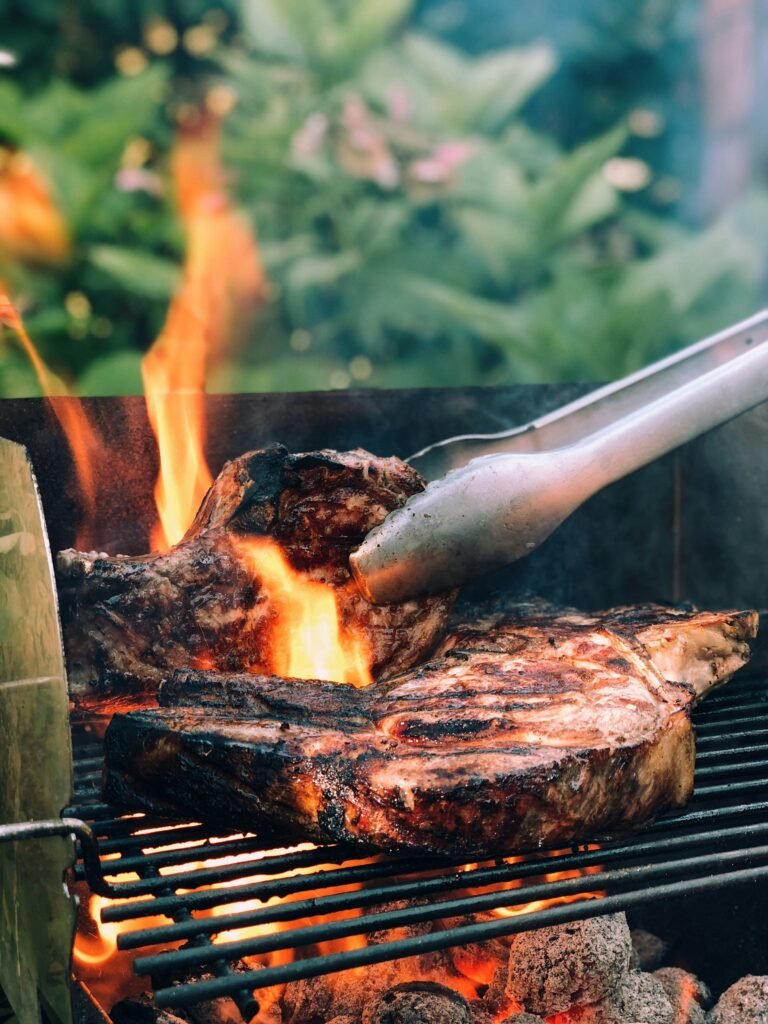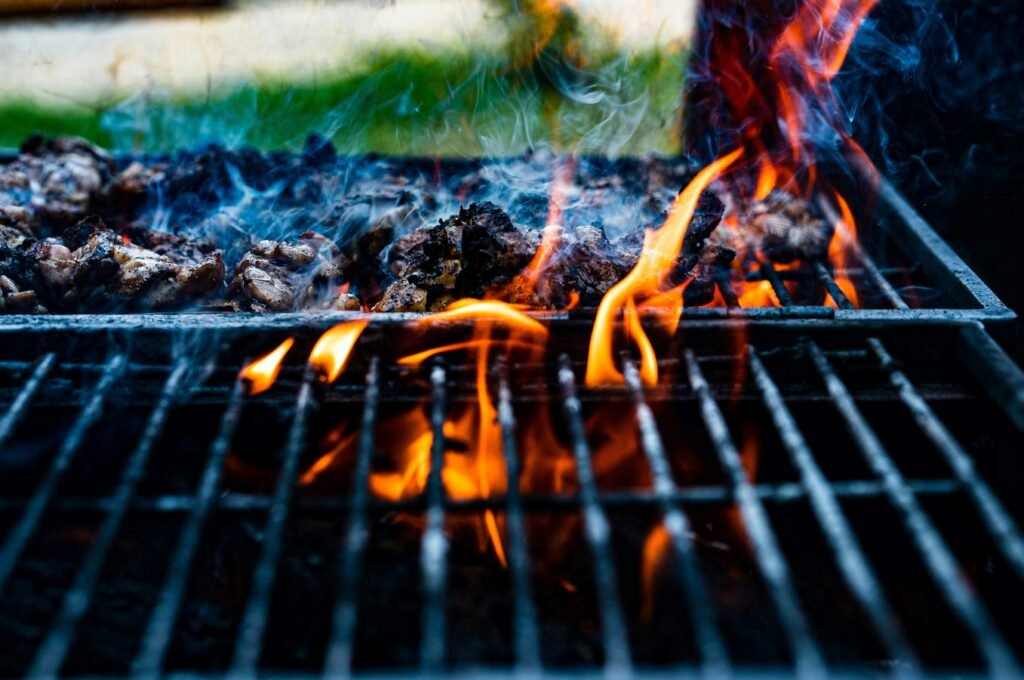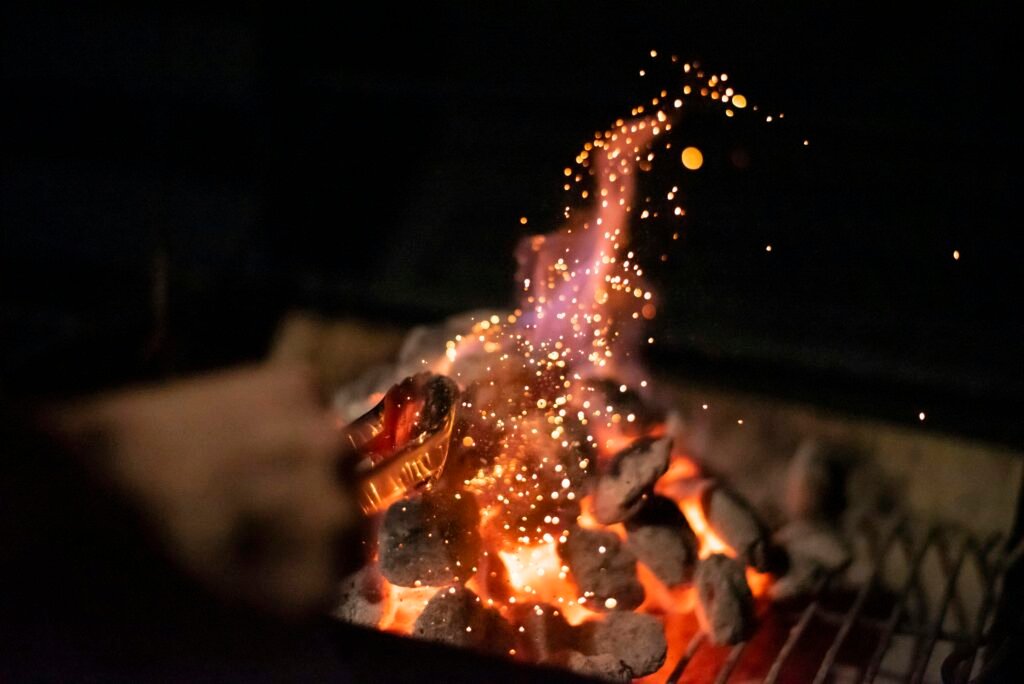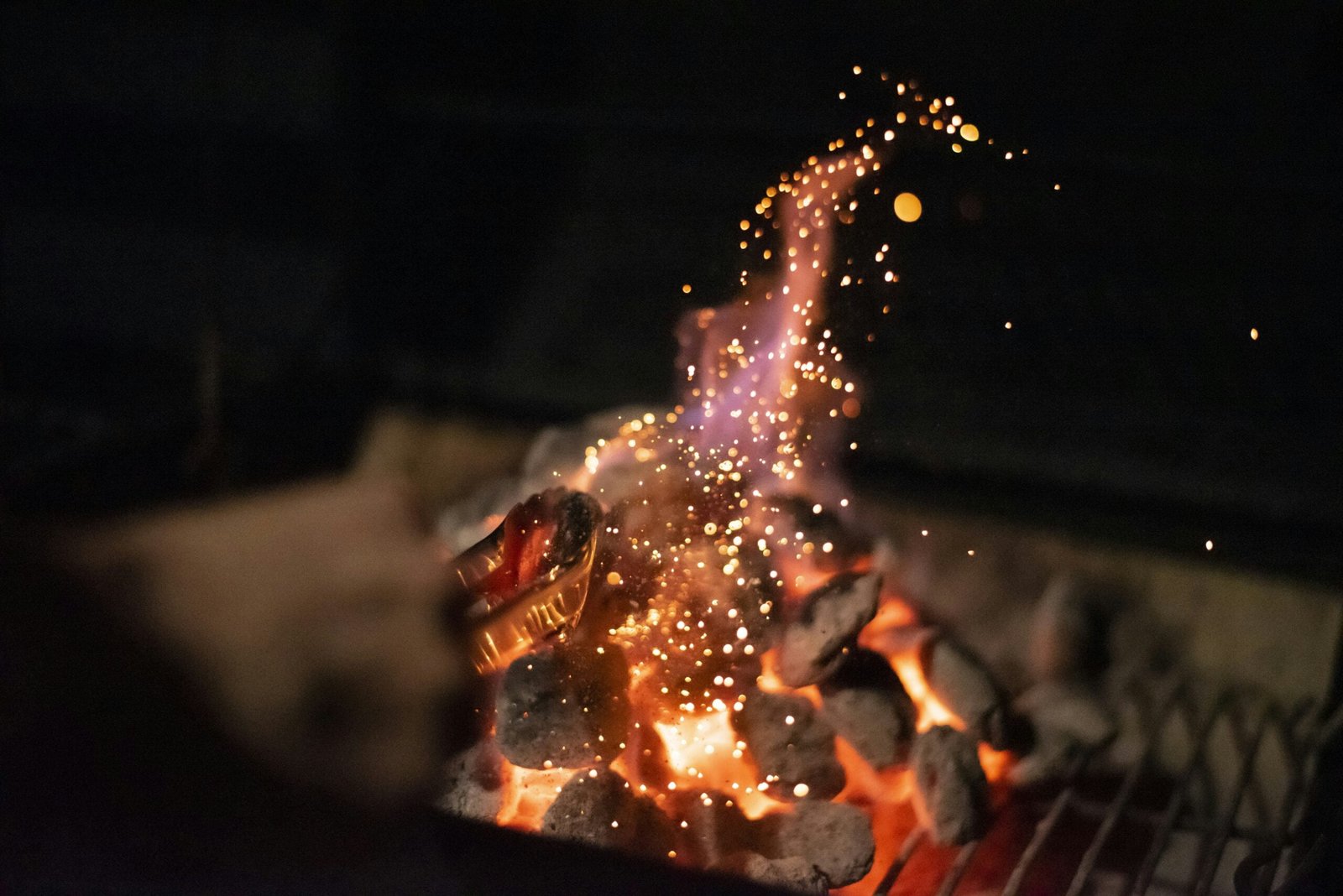When it comes to choosing between gas and charcoal grills, it’s easy to feel overwhelmed by the options. But fear not! In this article, we’ll break down the key differences between gas and charcoal grills, helping you make an informed decision for your next backyard barbecue. From the flavor and cooking time to convenience and cost, we’ve got you covered. So grab your apron and get ready to become a grill master – let’s get cooking!
Basic Description of Gas Grills
Definition and general overview of Gas Grills
Gas grills are a popular choice among barbecue enthusiasts due to their ease of use and convenience. These grills are powered by propane or natural gas, which provides a consistent heat source for cooking. They typically consist of a burner unit, cooking grates, a hood or lid, and various control knobs. Gas grills allow for precise temperature control, making it easier to cook a wide variety of dishes.
Components and structure of Gas Grills
Gas grills are typically constructed with a sturdy metal frame and a cooking chamber made of stainless steel or cast iron. They feature one or multiple burners, which generate heat when ignited. The cooking grates are usually made of stainless steel or porcelain-coated cast iron, providing an even cooking surface for your food. The hood or lid helps to retain heat and can be opened or closed, allowing for different cooking methods such as direct or indirect heat.
How Gas Grills Work
Gas grills work by using propane or natural gas as a fuel source. When the gas is turned on at the control knobs, it flows through the gas supply line to the burners. The burners then ignite the gas, producing a flame that heats up the cooking grates. The heat generated can be adjusted by manipulating the control knobs, allowing you to cook your food at the desired temperature. Gas grills also often feature additional components such as side burners for cooking side dishes or warming racks for keeping food hot.
Basic Description of Charcoal Grills
Definition and general overview of Charcoal Grills
Charcoal grills have long been a favorite among grilling enthusiasts for their ability to infuse a distinct smoky flavor into food. These grills use charcoal briquettes or lump charcoal as a fuel source and require a bit more effort to operate compared to gas grills. They consist of a charcoal grate, a cooking grate, an adjustable air vent or dampers, and a lid. Charcoal grills provide a traditional and authentic grilling experience.
Components and structure of Charcoal Grills
Charcoal grills are typically made of metal, such as stainless steel or cast iron, and feature a sturdy frame. They have a charcoal grate at the bottom, where the charcoal is placed, and a cooking grate on top for grilling food. The adjustable air vents or dampers allow you to regulate the airflow, controlling the temperature inside the grill. The lid helps to trap the heat and smoke, resulting in a more intense flavor.
How Charcoal Grills Work
Charcoal grills rely on charcoal briquettes or lump charcoal as a fuel source. The charcoal is arranged on the charcoal grate, and a fire starter or lighter fluid is used to ignite it. As the charcoal burns, it produces heat and smoke, which cook the food on the cooking grate. The temperature can be adjusted by opening or closing the air vents or dampers, allowing for different levels of heat control. Charcoal grills require periodic replenishment of charcoal during long cooking sessions to maintain the desired heat level.

Price Differences Between Gas and Charcoal Grills
General cost of Gas Grills
Gas grills generally have a wider price range depending on their size, features, and construction materials. Entry-level gas grills can be found for as low as $100, while high-end models with advanced features can cost several thousand dollars. On average, a mid-range gas grill suitable for household use ranges from $300 to $700. It’s important to consider the long-term cost of fuel when purchasing a gas grill, as propane or natural gas refills can add to the overall expense.
General cost of Charcoal Grills
Charcoal grills, on the other hand, tend to be more affordable compared to gas grills. Basic charcoal grills can be purchased for as little as $50, making them a budget-friendly option. However, larger and more robust charcoal grills with additional features such as adjustable grates or built-in temperature gauges can cost around $200 to $500. Charcoal grills also require the purchase of charcoal briquettes or lump charcoal, which adds to the ongoing cost of using these grills.
Additional costs associated with Gas Grills
In addition to the initial purchase price, gas grills may require additional expenses such as the purchase of a propane tank or a natural gas connection kit. Propane tanks can be refilled or exchanged for a fee, typically ranging from $20 to $30 depending on the size. Some gas grills also require periodic replacement of parts such as burners or igniters, which can incur additional costs.
Additional costs associated with Charcoal Grills
While charcoal grills generally have a lower upfront cost, they do require ongoing expenses for fuel. Charcoal briquettes or lump charcoal need to be replenished for each grilling session, which can vary in cost depending on the brand and quantity. Additionally, disposable charcoal trays or ash pans might need to be replaced periodically for hygiene and safety reasons.
Fuel Type and Supply for Gas and Charcoal Grills
Type of fuel used in Gas Grills
Gas grills can be powered by either propane or natural gas. Propane is the most commonly used fuel type for gas grills as it is readily available in portable tanks. Natural gas, on the other hand, requires a dedicated gas line connection to the grill. Propane tanks can be easily refilled or exchanged, while natural gas grills rely on a continuous supply from the gas line installed at your home.
Fuel supply and consumption in Gas Grills
Propane tanks used in gas grills come in various sizes, typically ranging from 5 to 20 pounds. The size of the tank determines the grilling duration before a refill is required. On average, a 20-pound propane tank can provide around 15 to 20 hours of grilling time. The consumption rate depends on factors such as the number of burners used and the cooking temperature. Natural gas grills, on the other hand, have a constant supply of fuel as long as the gas line is connected.
Type of fuel used in Charcoal Grills
Charcoal grills utilize charcoal briquettes or lump charcoal as fuel. Charcoal briquettes are made from compressed charcoal dust and other additives, while lump charcoal consists of natural chunks of hardwood. Both types of fuel ignite easily and provide a steady source of heat. Some enthusiasts prefer lump charcoal for its more natural flavor, while others find charcoal briquettes more convenient and easier to handle.
Fuel supply and consumption in Charcoal Grills
The amount of charcoal required for a grilling session depends on the size of the grill, the desired cooking temperature, and the duration of the cook. On average, a standard charcoal grill may require 6 to 8 pounds of charcoal for a typical grilling session. However, additional charcoal may be needed for longer cooking times or higher temperatures. It’s important to keep extra charcoal on hand to ensure uninterrupted cooking.

Flavor Contribution of Gas and Charcoal Grills
How Gas Grills affect flavor
Gas grills are known for their ability to produce consistent heat, but they may not impart as much smoky flavor to the food as charcoal grills. However, many gas grills come equipped with special features such as lava rocks or smoker boxes, which can help enhance the smoky flavor. Additionally, some grilling enthusiasts use wood chips or chunks to add extra flavor by placing them directly on the burner or in a smoker box.
How Charcoal Grills affect flavor
Charcoal grills are highly regarded for their ability to infuse a distinct smoky flavor into the food. As the charcoal burns and produces smoke, it imparts a rich, earthy taste that is highly sought after by grillmasters. The type of charcoal used can also influence the flavor; hardwood lump charcoal is often preferred for its natural, authentic taste. The smoky flavor achieved with charcoal grills is one of the main reasons why they remain a popular choice among grilling enthusiasts.
Ease of Use and Convenience between Gas and Charcoal Grills
Operating procedures for Gas Grills
Gas grills are generally more user-friendly and convenient to operate compared to charcoal grills. To use a gas grill, simply turn on the gas supply, ignite the burners, and wait for the grill to reach the desired temperature. The heat can be easily adjusted using the control knobs, allowing for precise cooking. Gas grills also heat up quickly, reducing the wait time before you can start grilling.
Ease of use of Gas Grills for beginners
Gas grills are often recommended for beginners due to their simplicity and ease of use. The temperature control, quick heat-up time, and consistent heat source make it easier to achieve desired cooking results. Gas grills require minimal maintenance and cleaning, and there is no need to handle messy charcoal or worry about disposing of ashes. For those who value convenience and ease of operation, gas grills are a great choice.
Operating procedures for Charcoal Grills
Charcoal grills require a bit more effort and time to operate compared to gas grills. To use a charcoal grill, you will need to arrange the charcoal briquettes or lump charcoal on the charcoal grate and ignite them using a fire starter or lighter fluid. Once the charcoal is lit, you can adjust the airflow by opening or closing the vents to control the temperature. It takes some practice to get the charcoal to the desired heat level.
Ease of use of Charcoal Grills for beginners
While charcoal grills may require a learning curve for beginners, many find the process enjoyable and satisfying. The act of lighting the charcoal and tending to the fire adds to the overall grilling experience. Charcoal grills provide the opportunity to connect with the traditional art of grilling and experimenting with different charcoal flavors. For those who appreciate the authenticity and hands-on approach, charcoal grills offer a rewarding journey.

Cooking Speed and Efficiency between Gas and Charcoal Grills
Cooking speed of Gas Grills
Gas grills are known for their efficient cooking speed. The burners produce a consistent and evenly distributed heat, allowing for faster and more precise cooking. Gas grills are ready to use within minutes of ignition and can reach the desired cooking temperature quickly. This efficiency makes gas grills a great option for quick weeknight dinners or when you need to cook for a large group of people.
Efficiency rating of Gas Grills
Gas grills are considered highly efficient due to their ability to provide consistent heat at a desired temperature. The even distribution of heat across the cooking surface minimizes hot spots and ensures that food is cooked evenly. Gas grills also have the advantage of instant ignition and precise temperature control, reducing the chances of overcooking or undercooking. This efficiency allows for faster cooking times and better utilization of fuel.
Cooking speed of Charcoal Grills
Charcoal grills generally require a longer preheating time compared to gas grills. It takes around 15 to 30 minutes for the charcoal to ignite and reach the desired cooking temperature. The cooking speed also depends on the amount of charcoal used and the airflow control. The use of additional techniques such as direct or indirect heat can affect the cooking time as well.
Efficiency rating of Charcoal Grills
Charcoal grills may not be as efficient in terms of cooking speed compared to gas grills. However, when it comes to flavor and the quality of the cooking process, many grilling enthusiasts argue that the slightly longer cooking time is worth the wait. Charcoal grills excel in slow-cooking methods and are often used for barbecue classics such as low and slow smoked meats. The efficiency of a charcoal grill lies in its ability to infuse food with a smoky flavor and achieve a desired level of tenderness.
Maintenance and Cleaning of Gas and Charcoal Grills
Maintenance requirements for Gas Grills
Gas grills require regular maintenance to ensure optimal performance and longevity. This includes checking the fuel supply, such as the propane tank or gas line, for leaks or damage. Cleaning the burners, cooking grates, and grease trays is essential to prevent flare-ups and maintain hygiene. It’s also important to inspect and replace any worn-out parts such as burners or igniters. Regular maintenance routines can vary depending on the frequency of use and the specific model of the gas grill.
Cleaning process for Gas Grills
To clean a gas grill, start by disconnecting the propane tank or turning off the gas supply. Remove the cooking grates and scrub them with a brush to remove any food residue. Clean the burners using a wire brush to remove any buildup. Empty and clean the grease tray or pan. Wipe down the exterior of the grill and polish any stainless steel surfaces. Regular cleaning and maintenance will help prolong the life of your gas grill and ensure safe and enjoyable grilling sessions.
Maintenance requirements for Charcoal Grills
Charcoal grills also require regular maintenance to ensure proper functioning and longevity. This includes regular inspection of the grill’s components, such as the charcoal grate and cooking grate, for any signs of wear and tear. It’s important to clean out the ashes and dispose of them properly after each use. Inspection and cleaning of the vents or dampers are also necessary to ensure proper airflow and temperature control.
Cleaning process for Charcoal Grills
To clean a charcoal grill, start by allowing the remaining charcoal to burn out completely and cool down. Once cool, remove the cooking grates and brush away any remaining ashes or food debris. Clean the vents or dampers to remove any buildup, ensuring the proper flow of air. If necessary, scrub the charcoal grate and ash pan with a wire brush to remove any stubborn residue. Regular cleaning and maintenance will help prevent rust and prolong the lifespan of your charcoal grill.
Environmental Impact of Gas and Charcoal Grills
Emissions from Gas Grills
Gas grills produce fewer emissions compared to charcoal grills. Propane is a cleaner-burning fuel, resulting in lower carbon monoxide and particulate matter emissions. Natural gas, often used for stationary gas grills, is considered the cleanest-burning fossil fuel and produces fewer greenhouse gas emissions. However, it’s important to ensure proper ventilation to prevent the accumulation of potentially harmful gases such as carbon monoxide when using gas grills in enclosed or poorly ventilated spaces.
Sustainability of Gas Grills
The sustainability of gas grills largely depends on the fuel source. Propane is a non-renewable fossil fuel, and its extraction and production can have environmental impacts. However, propane is considered a clean-burning fuel and is available in large quantities. Natural gas, while a fossil fuel as well, is considered more sustainable due to its abundance and lower greenhouse gas emissions compared to other fossil fuels.
Emissions from Charcoal Grills
Charcoal grills emit more smoke, carbon monoxide, and particulate matter compared to gas grills. The burning of charcoal briquettes or lump charcoal releases more pollutants into the atmosphere. The smoke produced during grilling contains chemicals known as polycyclic aromatic hydrocarbons (PAHs), which can be harmful when inhaled or consumed in large quantities. Adequate ventilation is important when using charcoal grills to minimize exposure to these emissions.
Sustainability of Charcoal Grills
Charcoal production can contribute to deforestation and habitat destruction, as trees are often cut down for charcoal production. However, there are sustainable alternatives available, such as charcoal made from renewable sources like coconut shells or sustainably managed forests. Using natural lump charcoal can also reduce the environmental impact of charcoal grilling. Additionally, charcoal grills can be more energy-efficient, as they require no electricity or gas supply.
Safety Considerations for Gas and Charcoal Grills
Safety measures when using Gas Grills
When using gas grills, it’s important to ensure proper ventilation to prevent the buildup of potentially harmful gases. Avoid using gas grills in enclosed or poorly ventilated spaces to minimize the risk of carbon monoxide poisoning. Regularly check the gas connections for leaks or damage and replace any faulty parts promptly. Keep flammable materials away from the grill and never leave it unattended while in use. Follow the manufacturer’s instructions and guidelines for safe operation.
Potential risks and hazards of Gas Grills
Gas grills carry the risk of gas leaks, which can lead to fire or explosion if not detected and addressed promptly. Improper handling of propane tanks can also result in leaks or accidents. The high heat generated by gas grills poses a burn hazard, and caution should be exercised when operating or cleaning the grill. It’s important to keep children and pets away from the grill and use proper tools and protective equipment when handling hot surfaces or food.
Safety measures when using Charcoal Grills
When using charcoal grills, it’s essential to place them on a stable and non-flammable surface away from any combustible materials. Keep a safe distance from buildings, trees, or other structures to minimize the risk of fire. Never use accelerants such as gasoline or lighter fluid once the charcoal has been ignited, as this can result in uncontrollable flames. Properly dispose of ashes in a metal container and ensure they are completely cool before discarding them.
Potential risks and hazards of Charcoal Grills
Charcoal grills pose the risk of burns due to the high temperatures involved during operation. The open flames and hot coals must be handled with caution, and children and pets should be kept at a safe distance. The smoke generated by charcoal grills can also cause eye and respiratory irritation, so it’s important to grill in a well-ventilated area. Additionally, the buildup of ashes can create a fire hazard if not properly managed and disposed of.
In conclusion, gas grills and charcoal grills offer different advantages and considerations for grilling enthusiasts. Gas grills provide convenience, precise temperature control, and ease of use, making them suitable for beginners and those who prioritize convenience. On the other hand, charcoal grills offer a distinct smoky flavor, a traditional grilling experience, and the opportunity to experiment with different charcoal flavors. They require more effort to operate, but many find the process rewarding. It’s essential to consider factors such as cost, fuel type, flavor contribution, ease of use, cooking speed, maintenance requirements, environmental impact, and safety when choosing between gas and charcoal grills. Ultimately, the choice depends on personal preferences and the desired grilling experience. Remember to always prioritize safety and enjoy the unique flavors and joy of outdoor grilling!

